-
 Korea.net's 24-hour YouTube channel
Korea.net's 24-hour YouTube channel- NEWS FOCUS
- ABOUT KOREA
- EVENTS
- RESOURCES
- GOVERNMENT
- ABOUT US
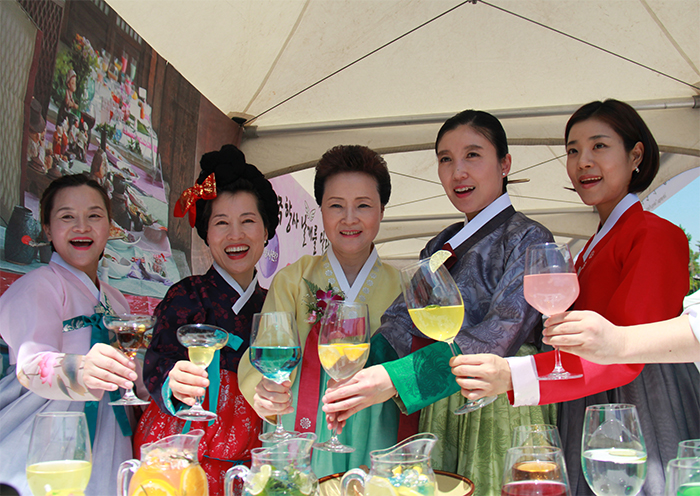
The 2016 Korean Traditional Liquor & Food Festival was held at the Namsangol Hanok Village in Jung-gu District, Seoul, on May 19. Yoon Sook-ja (center), chairperson of the Korean Food Foundation and main organizer of the event, introduces traditional liquor at the festival. Visitors were able to taste some modern cocktails that used traditional liquors and sample some of the best pairings between traditional foods and traditional liquors.
"The taste and aroma of traditional Korean liquors is absolutely excellent," said Yoon sook-ja, chairperson of the Korean Food Foundation, as she emphasized the taste and flavor of the drinks when she was talking about the value of traditional Korean liquors.
The 2016 Korean Traditional Liquor & Food Festival took place at the Namsangol Hanok Village on May 19 in Seoul. “When crafting traditional alcoholic beverages, the brewers use different ingredients: more than 20 varieties of yeast, such as white seed grain and rough grain, including fruit from the matrimony vine, jujubes and ginseng. Each can be used to create several kinds of drinks, and all of them taste and smell uniquely different from each other,” said Yoon. “This festival is in its ninth year, as we continue to successfully educate connoisseurs about the benefits and nuances of traditional Korean liquor,” she added.
During the two-day festival on May 19 and 20, visitors were able to enjoy a range of traditional tipples from all across the country, and sample some of the best pairings between traditional foods and traditional liquors. There were even some modern cocktails to sample, too, which made use of traditional boozes. On the far side of the venue, a model of a traditional tavern from each of ancient Korea's eight provinces, and which showed that province's most common alcohol-food pairing, could be seen.
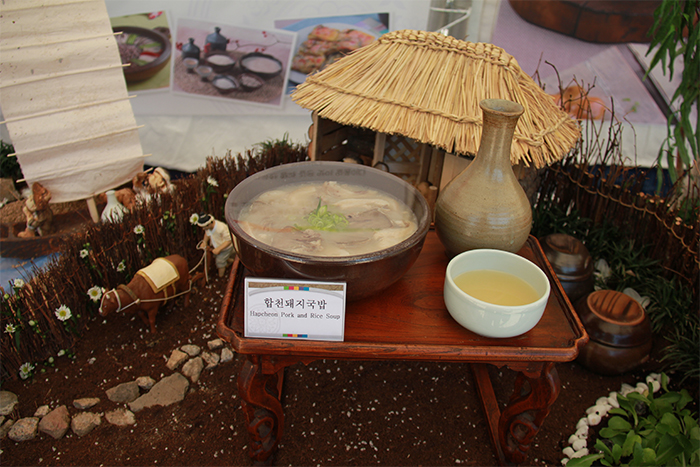
A model tavern from Gyeongsangnam-do Province is decorated with bowl of pork soup with rice from Hapcheon-gun County, famous for soothing the hunger and fatigue of strangers from across the land.
Visitors were most enamored, however, by the range of modern cocktails on offer that were prepared using traditional liquors.
About 20 different modern cocktails were there to be sampled, showing off their fine color and delicate flavors. “Modern cocktails that use traditional quaffs taste really smooth, and the alcohol percentage is fairly low, so even non-drinkers can easily enjoy them,” said Na Gye-jin, a culinary expert from the Institute of Traditional Korean Food.
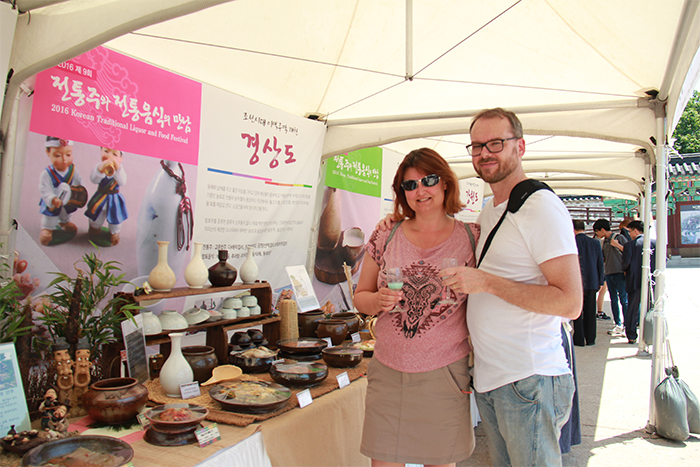
Margreet and Ronald Bosveld, on a trip to Korea, give high praises to the modern cocktails they sampled that made use of traditional Korean liquors.
“Korean traditional liquors are smooth and aren't strong. They should be a drinkable beverage. We feel good because we're experiencing the ‘real Korea,' while also experiencing Korean traditions here at the Hanok village,” said the couple of Margreet and Ronald Bosveld, on vacation from the Netherlands.
Another tourist, speaking in fluent Korean, compared traditional drinks to Korea's more common drink, soju. “Soju tastes really strong and doesn’t suit my palate. However, these cocktails crafted using traditional liquors are very tasty and delicate,” said Ilhan Topkaya from Turkey.
By Son Gina
Korea.net Staff Writer
Photos: Son Gina, Facebook profile for the U.S. Ambassador to the Republic of Korea
ginason@korea.kr
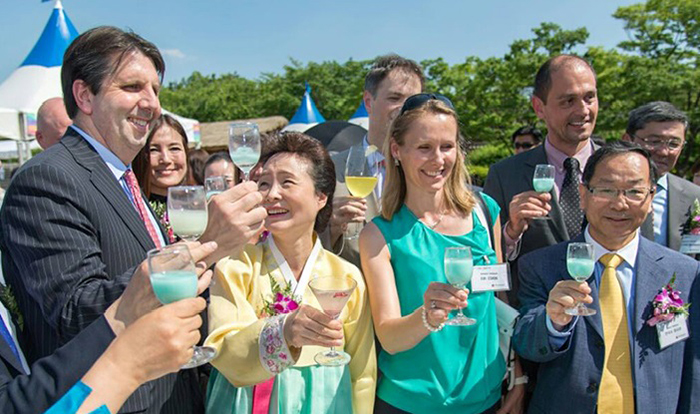
U.S. Ambassador to the Republic of Korea Mark Lippert (left), Korean Food Foundation Chairperson Yoon Sook-ja (second from left) and other dignitaries pose for a photo at the 2016 Korean Traditional Liquor & Food Festival at the Namsangol Hanok Village in Jung-gu District, Seoul, on May 19.
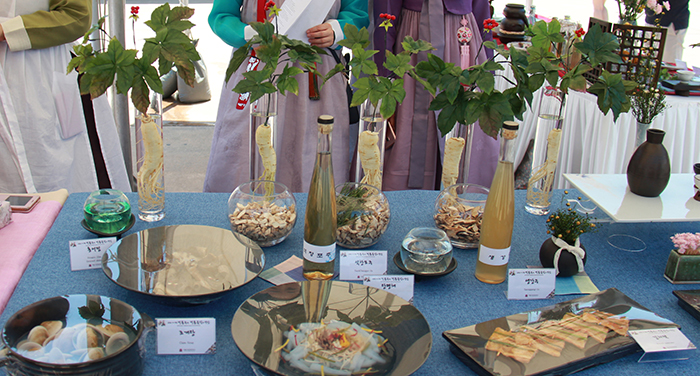
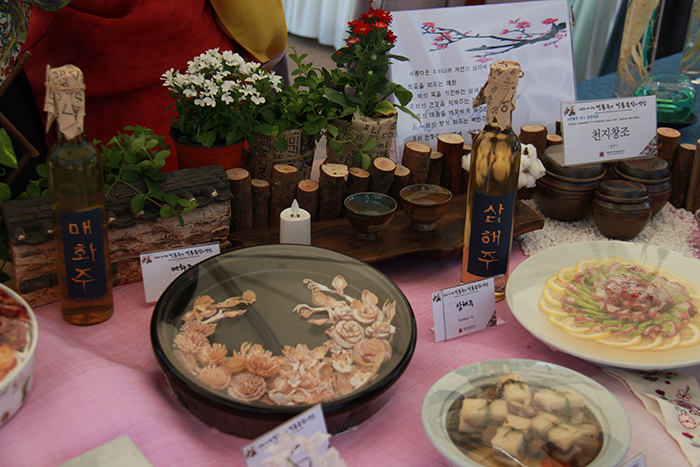
During the 2016 Korean Traditional Liquor & Food Festival, traditional liquors, home-brewed beverages, and a variety of perfectly matched pairings between traditional foods and traditional alcohols, were introduced from each of the eight ancient Korean provinces.
Most popular
- First hearing-impaired K-pop act hopes for 'barrier-free world'
- Expats could account for 7% of population in 20 years: report
- 'Mad Max' director impressed by 'cinema-literate' Korean viewers
- Show in Italy to present 'thought-filled' Korean craftworks
- Romanian presidential couple visits national cemetery













